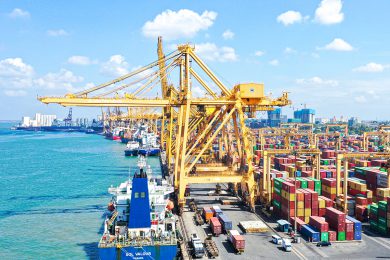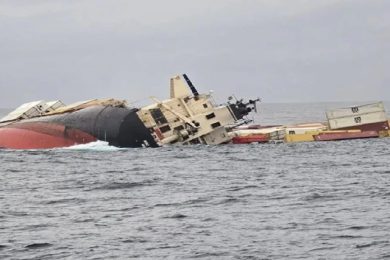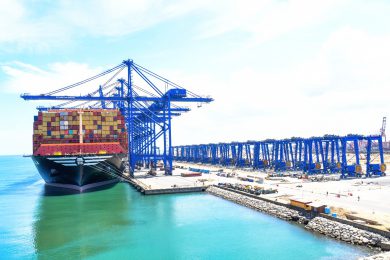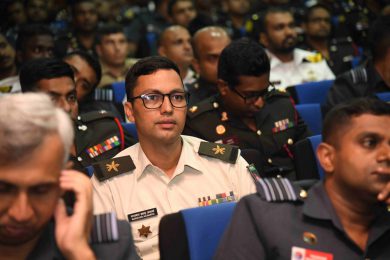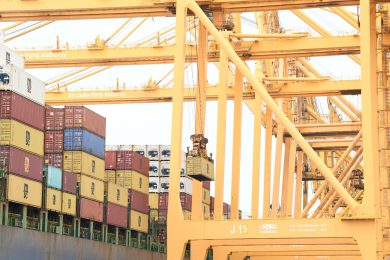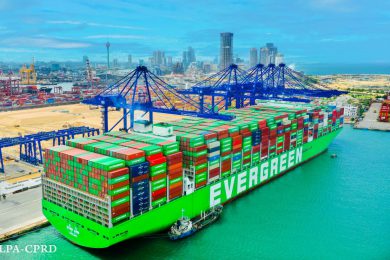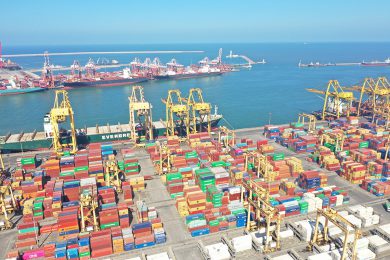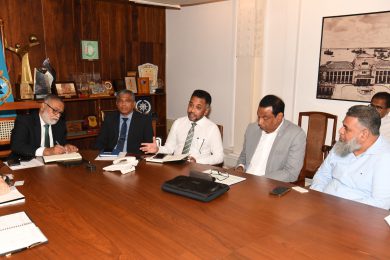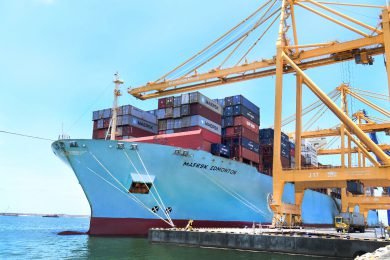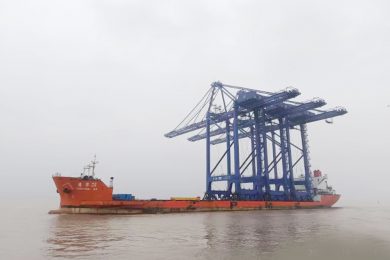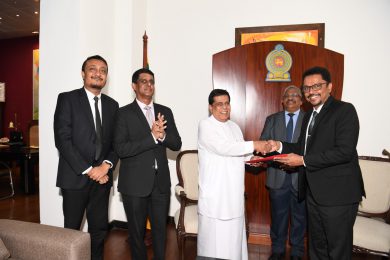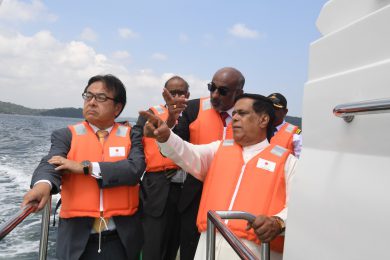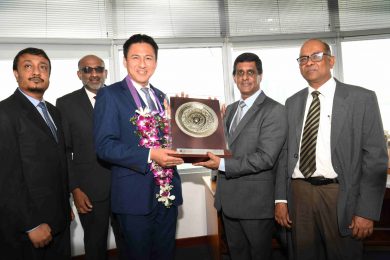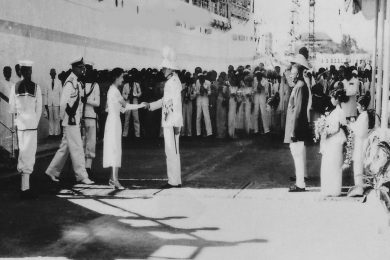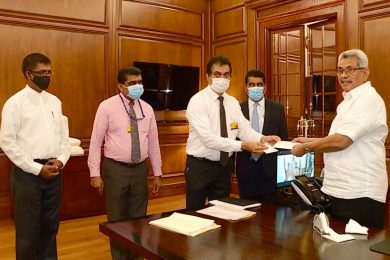The main challenge for women seafarers is a common problem in general for women workers in male-dominated occupations: a lack of awareness and stereotyping about women’s ability to work.
by Momoko Kitada
Introduction
Historically, men have been the predominant gender in seafaring. Political debates regarding the need to empower women in the maritime sector are strengthened by the economic projection that in the future there will be a shortage of maritime officers. Seafarers are a long-term investment, particularly because under the International Convention on Standards of Training, Certification and Watchkeeping for Seafarers (STCW), 1978 as Amended, they are required to spend at least 12-months on board prior to being issued with a licence. In 2016, the International Chamber of Shipping (ICS) and the Baltic and International Maritime Council (BIMCO) reported that an additional 16,500 officers would be needed worldwide to meet anticipated future demand (BIMCO and ICS 2016). In this context it would be unwise for shipping companies to discount the potential of women in mitigating crew shortages.
Notwithstanding labour market imperatives, the development of gender equality in the maritime sector is currently slow. Some efforts have been made to promote the recruitment of women seafarers in the last couple of decades but these have not had a significant impact on the overall numbers of women seafarers employed at sea. For the purposes of this chapter women seafarers are classified as those women who work in the operational section of cargo ships as deck officers and engineers. Where they are employed at all, these women are usually assigned as a lone female to a vessel which typically accommodates 18 seafarers. This chapter examines the barriers to the employment of women seafarers and identifies problems in the current attempts at addressing the gender imbalance in the maritime industry.
Three impediments to female employment will be discussed in the context of modern shipping: occupational cultural barriers; lack of awareness and knowledge about women at sea; and the slow development of effective policies and strategies aimed at recruiting and retaining women seafarers. It draws the conclusion that the employment of women seafarers should be more focused and that the engagement of employers, including shipping companies and crewing agencies, is necessary to improve the situation of women seafarers.
Gender Segregation in Seafaring Occupations
Transport businesses, including road, rail, and air (ITF 2014) are generally male-dominated. Similarly, shipping is known worldwide as an extremely male-dominated industry. Accurate numbers of female maritime transport workers are difficult to obtain especially in the private sector, including merchant shipping and the fishing industry. However, it has been reported that the percentage of women seafarers in 1998 was approximately 2% according to the International Maritime Organization (IMO) (Belcher et al. 2003). This figure included women in non-operational sections of vessels such as hotel and catering. Female deck officers and engineers are present in much smaller numbers on cargo ships, and are estimated to constitute 0.12% of the total seafaring population (Drewry, ILO and ITF 2009).
The latest manpower report estimates that women seafarers represent only 1% of all seafarers (BIMCO and ICS 2016). This seems to imply a 1% decrease in the number of women seafarers over 15 years. However, this figure includes women in ship operational sections only. Nevertheless, approximately a half of this figure comes from female cadets and trainees who have not yet completed their 12-month sea time in order to obtain a license. Therefore, fully qualified women seafarers in ship operational sections would be considered to number only 0.5%. Women officers are sometimes observed in passenger ship sectors, such as cruise ships, passenger ships, and small ferry boats. If these numbers were contributing to a part of this 0.5 percent, the earlier figure of 0.12% of women seafarers on cargo ships would still be a realistic picture.
Gender segregation in seafaring occupations is even more significant in the engine department. Most women choose to study nautical sciences rather than marine engineering in school. According to the study conducted by the Women in Maritime Association, Philippines (WIMA-Phil) from 2008 to 2011, among 30 maritime education and training institutions in the country, the numbers of female graduates were five (0.56%) in marine engineering courses and 123 (0.94%) in marine transportation courses (Limcaoco 2013). Women’s participation rates in both navigation and engineering courses are reflected in the actual proportion of women in deck and engine departments where female deck officers outnumber female engineers (Belcher et al. 2003; Chan 2019).
It is clear that there has not been much progress made in terms of increasing overall numbers of women seafarers. This begs the questions:
Have there been any efforts made to encourage women to go to sea?
Who participated in these efforts and who did not?
Why Are Women Seafarers Still a Minority?
It has been only in the last few decades that women have emerged as an important element of the workforce in seafaring. There have been a small number of female pioneers who proved themselves to be competent seafarers and most of these hailed from Europe, in particular, Scandinavian countries (Belcher et al. 2003; Kaijser 2005; Kitada and Langåker 2016).
In response to the poor representation of women, the IMO has launched several campaigns to promote women in the maritime sector. During the period 1988–1996, the IMO focused on the development of a gender strategy to establish formal institutional structures to include gender balance in their strategic goals. From 1997 to 2004, the programme entered a sensitisation phase with campaigns across the regions. Since 2004, the IMO has engaged in the strategic development of regional associations for women maritime professionals (Tansey 2015) and in April 2013 the IMO hosted a regional conference relating to the development of a global strategy for women seafarers in Busan, South Korea. This concluded with the Busan Declaration,1 which refers to the promotion of women seafarers around the world.
An important milestone was the recognition of women seafarers at the level of international conventions which was achieved in 2010. The so-called, ‘Manila Amendment’ of the STCW, included ‘Resolution 14: Promotion of the participation of women in the maritime industry’ which was adopted in the Final Act of the Conference of Parties to STCW (IMO 2010). While the STCW convention focuses on the education and training of seafarers, another convention specifies the rights of seafarers, including women.
The International Labour Organization (ILO) provided some support to women seafarers in the drafting of the Maritime Labour Convention (MLC) 2006, by including specific requirements to ensure the conditions of shipboard facilities for women. Those conditions include separate sleeping rooms and separate sanitary facilities for men and women (ILO 2006). The MLC 2006 specifies the minimum living standards for seafarers, including women, and defines the responsibilities of flag states in responding to the needs of seafarers (Kitada 2015b). The 2016 amendment of the MLC, 2006, included the Guideline B4.3.1 at paragraph 4 with the addition of a new subparagraph (d) harassment and bullying. This was a specific reference to the Guidance on eliminating shipboard harassment and bullying, jointly published by the International Chamber of Shipping (ICS) and the International Transport Workers’ Federation (ITF) (ICS and ITF 2016). Other organisations who support women seafarers are the Women’s International Shipping and Trading Association (WISTA), and the International Seafarers’ Welfare and Assistance Network (ISWAN) who actively advocate the rights of women seafarers.
As discussed earlier, various reports indicate a negligible increase in the number of women seafarers, however the efforts made by international associations seem to have contributed to the advancement of women seafarers to some extent. The following section looks more closely at the evidence.
Advancements in the Promotion of Women Seafarers
Thanks to the international campaigns, including the United Nations (UN) Millennium Development Goals (MDGs) in 2000 followed by the Sustainable Development Goals (SDGs) in 2015, the importance of encouraging women to work in the maritime sector has been generally acknowledged across countries. Despite the fact that women are seemingly welcomed into the shipping industry, the actual progress in encouraging women seafarers seems to be limited. There are still some shipping companies which are reluctant to employ women seafarers and some which openly refuse to consider female applicants because of their gender. This problem was widely acknowledged by the participants at the IMO’s regional conference on the development of a global strategy for women seafarers, held in Busan, in 2013. The IMO launched a publicity video to promote positive change for women seafarers, called ‘Women at the Helm’,2 and the Busan Declaration was adopted as a conclusion to the conference, requiring a further advancement of unified efforts to support women seafarers. Such efforts were followed up by the IMO’s World Maritime Day (WMD) 2019 theme: ‘Empowering women in the maritime community’ by corresponding to SDG 5 (Achieve gender equality and empower all women and girls). The World Maritime University (WMU), which was established by the IMO in 1983, hosted the Third WMU International Women’s Conference on Empowering Women in the Maritime Community, and adopted a set of conclusions, calling for actions to increase the visibility and employment opportunities of women maritime professionals (IMO 2019a; WMU 2019). These conference conclusions were further emphasised by the adoption of the IMO resolution A.1147(31) at the 31st session of the IMO Assemby, recalling for the roles and responsibilities of various maritime stakeholders to promote gender equality in the sector (IMO 2019b).
In recent years, more Maritime Education and Training (MET) institutions have opened their doors to women for enrolment in navigation and marine engineering courses. For example, the Arab Academy for Science Technology & Maritime Transport (AASTMT) in Egypt accepted the first female student in the College of Maritime Studies in 2007 (Saeed 2015) while the Bangladesh Maritime Academy (BMA) recruited 16 female cadets in 2012 and increased its intake to 20 in 2013 (Hussain 2014a). Among these women, 13 female cadets were accepted as on board trainees by the Bangladesh Shipping Corporation (BSC) (Hussain 2014b). These examples are often initiated by a few champions who act as change makers. However, unless they continue to advocate and reach out at the industry level, there may be a limited impact on the encouragement of women seafarers.
In China, the Shanghai Maritime University (SMU) accepted female students into nautical studies from the year 2000 onwards. While SMU is still the only university in China to offer a nautical study course to women, they seem to controversially discourage their female students from becoming seafarers. According to the Gender, Empowerment and Multicultural Crews (GEM) project conference in 2016,3 female nautical students at SMU are required to take an additional course on ‘ship management’, because it is believed that women are most unlikely to be employed as seafarers. It is common practice for SMU to convince female students to ‘backup’ their future. The SMU female nautical students, therefore, have the double burden of studying two courses for the same duration and are expected to perform well. In addition, they have a higher financial burden of paying for double courses at the cost of 50,000 Chinese yuan while male students pay 25,000 yuan for their navigation courses. These male students are further entitled to receive a 50% subsidiary from the government with an expectation of going to sea. Female students are not eligible because they are not expected to gain employment as seafarers.
This example clearly shows the gap between the education and the employment of women seafarers. The problem is, although more women have been receiving education and training as seafarers, they face barriers in relation to getting jobs at sea. Despite the successful efforts to increase female students in MET in line with global initiatives, (for example, ‘Education for All (EFA)’ (UNESCO 2015) and ‘Ensure inclusive and equitable quality education and promote lifelong learning opportunities for all’ as SDG 4 (UN 2015), few women succeed in gaining their licences. One barrier relates to the completion of their required ‘sea-time’ as cadets. Unless MET institutions have access to training ships, it is entirely up to female cadets to find a company with which to complete their 12-month sea-time and obtain their licence (See for example, Tifuh 2014).
Consequently the advancement of women seafarers is slow and it seems that the many initiatives have failed to facilitate the engagement of the industry. In order to further understand this gap in encouraging women seafarers, three aspects of the barriers to women seafarers will be discussed based on the literature: the occupational culture of seafaring; lack of awareness and knowledge; and slow development of effective policies and strategies.
Occupational Culture and Barriers for Women Seafarers
Seafaring has been a male-dominated occupation from the Age of the Sail. An assumption that seafarers are men can be found in a number of documents referring to seafarers as ‘he’, ‘his’ and ‘him’ (Kitada 2013). Researchers describe how rarely women have participated in seafaring and how their presence has been substantially overlooked within accounts of the male-oriented culture of the seas (Cordingly 2002; Bin Ahmad Ong 2019; Chan 2019).
The first barrier for women seafarers is culture embedded in occupation. Kitada (2010, 2011) studied the occupational culture of seafaring and concluded that masculine norms and values are reflected in the work culture on board ships. Seafaring jobs are often assumed to require muscles to operate equipment on board. According to the research (Kitada 2010; Chan 2019), women seafarers noted that even though technology is advanced, using muscle power demonstrates the traditional masculine value of labour and privileges the employment of strong and tough men. The idea of masculinity embraced in the occupational culture of seafaring is not limited to physical aspects but also to mental aspects. The idea that women tend to be emotional and cry promotes a negative image about women’s capacity to work at sea (Kitada 2010, 2013). Leadership and teamwork skills have been formally recognised as part of seafarers’ competences in the STCW convention (IMO 2011). In one institution, their course material on leadership and managerial skills defines ‘determination and drive’ as one of the leadership qualities and describes ‘masculinity’ to be important for seafarers:
DETERMINATION AND DRIVE – include traits such as initiative, energy, assertiveness, perseverance, masculinity, and sometimes, dominance. People with these traits often tend to overheartedly pursue their goals, work long hours, are ambitious, and often are very competitive with others. [emphasis added by the author]4
This example reflects an expectation about leadership in the maritime industry in the context of the STCW convention. Kitada’s research (2010, 2013) reveals that as a result of these stereotyped expectations many women seafarers attempt to conceal feminine characteristics using various identity management strategies, including avoiding tight clothes and choosing loose and baggy garments to hide their bodies, trying not to show their emotions and feelings, and/or smiling less. Some women used swear words to behave in a similar manner to their male colleagues. Such gender identity management strategies help women to make themselves look less feminine and/or more masculine in male-dominated workplaces like ships. Stapleton (2003) also pointed out in her study on gender and swearing that strong language is habitually deployed by both women and men in the context of shared group enterprises.
The masculine tone of seafaring work culture is significant. It encourages minority groups of workers, such as women seafarers, to adapt to masculine norms in order to be part of the team. Unless women modify their behaviour to meet the expectations of masculinity embraced within the occupational culture of seafaring, many of them will not succeed or survive. Some women suffer from gender stereotypes implying that women cannot perform as competently as men at sea and others experience overt and covert discrimination while on board (Belcher et al. 2003; Kitada 2010; WMU 2019). The burden of such gender-related challenges often falls onto women. Changing the attitude of the industry towards female maritime professionals is not always a priority, because employers have not yet come to fully appreciate that recruiting women seafarers may be their best available option in the face of a shortage of officers. The major seafaring supply nations, such as China, Philippines, Russia, Ukraine, and India, are currently regarded as able to maintain their capacity to supply seafarers (BIMCO and ICS 2016) whilst shipowners can easily explore the male labour markets in other emerging economies, such as Myanmar, Vietnam, Brazil, and South Africa.
A Lack of Awareness and Knowledge About Women at Sea
The second barrier for women seafarers is the misconception that women are not suitable for seafaring jobs and this is a common prejudice worldwide (Kitada 2010). Basak (2015) highlights that such prejudice is often proved wrong and many Turkish women seafarers have proved to be capable in their jobs at sea. In addition a widely held old myth in Europe is that women bring bad luck at sea when they are on board (Cordingly 2002).
The main challenge for women seafarers is a common problem in general for women workers in male-dominated occupations: a lack of awareness and stereotyping about women’s ability to work. A gendered division of labour is still common in many parts of the world (Walby 1988; Cunningham 2007; Kring 2017). Women tend to be perceived as suitable for ‘caring’ jobs while men are likely to fit to muscle-required or managerial jobs. Stereotypes for both masculine and feminine types of jobs are culturally and socio-economically constructed and hinder the opposite gender from entering a gender-segregated industry (e.g. the ideas of seafaring being unsuitable for women; and nursing not suitable for men). An overall development plan of gender equality by reducing a bias against women in general would affect the ways in which women seafarers are perceived and accepted on board as well as in shore communities. Hence, the integration of women into seafaring jobs should be a long-term strategic objective for the industry.
A limited amount of research about women seafarers is available on a variety of topics, such as sexual harassment and discrimination (Belcher et al. 2003; Thomas 2006; Raun 2019; Piñeiro and Kitada 2020), perceptions (Dragomir and Surugiu 2013; Theotokas and Tsalichi 2013), gender identity management (Kitada 2010, 2013), work-life balance in relation to marriage and family (Kitada 2009, 2015a), leadership (Fjærli 2015; Ortega et al. 2015; Kitada 2016), religious influence (Bin Ahmad Ong 2019), and health issues (Hansen and Jensen 1998; IMHA, ISWAN, ITF and SHS 2015). Such a pool of research-based knowledge is useful and constant efforts to do research should be encouraged.
Nevertheless the necessary information for women who are considering seafaring jobs is not easy to obtain or may simply be lacking. For example, a company’s policy about the security and health issues of women on board is of the utmost importance to women seafarers and those who are contemplating a career at sea. However the way a company deals with such critical issues is often unclear. Consequently this lack of transparency may in itself present a further barrier to women who are considering work at sea.
Slow Development of Effective Policies and Strategies for Women Seafarers
The development of effective policies and strategies for women seafarers seems to have been rather slow in the past couple of decades. At an international level, MLC 2006 specifies a minimum level of work conditions for women seafarers and is the only legal instrument to enforce its implementation, although it is limited to the ratifying countries—95 nations as of November 2019. International laws, including the Convention on the Elimination of All Forms of Discrimination against Women (CEDAW) by UN, and the Maternity Protection Convention (C183) by ILO, have an upper level of priorities applicable to all human beings on earth. Such international agreements are effective only when each country adopts them into their national laws. These national laws regulate shipowners and other stakeholders, prohibiting discrimination against women (Piñeiro and Kitada 2020).
While such laws need to be strengthened at a national level, a wide range of instruments, including guidelines and codes of conducts, can be developed. ITF has developed a guideline for the cruise sector, so-called ‘ITF Miami Guidelines Policy’5 which includes rules against discrimination. Some shipping companies proactively promote women to seafaring positions as part of their corporate social responsibility (CSR). CSR is indicated in the ISO 260006 as a marketable element of corporations. Yet, industry engagement, including knowledge sharing of business strategies and best practices for women seafarers, is limited. To respond to this concern, the ILO hosted the Sectoral Meeting on the Recruitment and Retention of Seafarers and the Promotion of Opportunities for Women Seafarers in Geneva from 25 February to 1 March 2019. The conclusions identified several priority areas, including cadet and trainee berths, equal opportunities and treatment of seafarers, and combatting harassment and bullying. It also reminded stakeholders that ‘mandatory pregnancy testing shall not be used to discriminate against women as this would violate the Discrimination (Employment and Occupation) Convention, 1958 (No.111), and the Maternity Protection Convention, 2000 (No.183) (ILO 2019).
A lack of gender policies in shipping companies has been addressed in various literatures. For example, the survey of shipping companies conducted by Belcher et al. (2003) shows that very few companies have specific policies regarding women. In 2019, Bin Ahmad Ong collected data from 15 Malaysian shipping companies, only two of which had a gender equal employment policy, and three of which actually employed women seafarers. While some shipping companies were positive about recruiting women seafarers, even to senior positions like Captains, it was also reported that quite a few European and Asian shipping firms had a negative image of women seafarers and they had never employed women (Belcher et al. 2003; Bin Ahmad Ong 2019). The main concern of shipping companies, relates to the safe operation of ships, with any human element, including seafarers’ rights and gender issues tending to be overlooked. The priorities are operational costs, safety and security (Couper 1999; Fitzpatrick and Anderson 2005; Kitada and Langåker 2017). After many years, it is still the case that a large number of shipping companies do not have gender-related work policies; or even if they have one, they may not necessarily have a mechanism to effectively implement such a policy and fail to communicate it with their (potential) employees.
It may be also worth noting that the distance between a manager and employees also creates a further complication in the effective implementation of gender equality policies. Kitada and Ölçer (2015) explain that the shipping industry tends to be hybrid at inter-organisational levels in terms of regulated/unregulated, or in-house/outsourced workplaces, which can pose a challenge. If the employer of seafarers is a third party crew agent to whom responsibility for crewing has been outsourced it may be difficult for a distant manager further up the supply chain to ensure gender equality in place and know whether there is a problem and how the problem is solved. Detailed reporting may be replaced with simplified checklists relating to compliance with gender-related issues and these may not be adequate. In the end, no one may be interested in gender-related policies unless a problem is raised externally with implications for public image and reputation.
Conclusion
The efforts to promote women seafarers in the past decades have focused on MET which has appeared to be successful to some extent in opening doors for more female students to enrol into seafarer training around the world. However, not as much progress as expected has occurred because there has been a missing link between this vocational education and actual employment practices. No matter how many female cadets are trained, unless shipping companies or crewing agencies employ them, those human resources are simply wasted and unwanted in the labour market.
The recruitment practices in the maritime sector still favour men over women. This chapter has outlined three barriers to the employment of women seafarers. Firstly, masculine values and norms are evident in the occupational culture of seafaring where gender discrimination or sexual harassment can be triggered towards a lone woman seafarer. In the globalised nature of shipping, many ocean-going vessels accommodate multi-national crew who bring various gender norms that may include different interpretations and expectations of women working at sea. Secondly, although awareness and knowledge regarding women seafarers are generally growing, the critical information needed for women to be employed as seafarers, such as security and health issues, is often unavailable. It is notable that very little research has been conducted in the area of employment policies for women seafarers. This should be a focus of future research, which would combat the third barrier: the slow development of effective policies and strategies for women seafarers. Greater engagement with shipping companies and crewing agencies should be promoted in terms of the development and implementation of gender-related policies and strategies for seafarers. Were more companies to employ women seafarers effectively the promotion of women seafarers would be facilitated.
References
Basak, A.A. 2015. Women’s Role in the Turkish and Global Maritime Industry. In Maritime Women: Global Leadership, edited by M. Kitada et al. WMU Studies in Maritime Affairs 3. https://doi.org/10.1007/978-3-662-45385-8_8.
Belcher, P., H. Sampson, M. Thomas, J. Veiga, and M. Zhao. 2003. Women Seafarers: Global Employment Policies and Practices. Geneva: International Labour Office.
BIMCO and ICS. 2016. Manpower Report: The Global Supply and Demand for Seafarers in 2015. London: Maritime International Secretariat Services Limited.
Bin Ahmad Ong, H. 2019. Gender Equality in the Malaysian Maritime Sector: Religious Influence on Empowering Women at Sea. MSc dissertation. Malmö: World Maritime University.
Chan, F.M. 2019. Female Engineer Officers – Breaking the Glass Ceiling. MSc dissertation. Malmö: World Maritime University.
Cordingly, D. 2002. Heroines & Harlots: Women at Sea in the Great Age of Sail. London: Pan Books.
Couper, A.D. 1999. Voyages of Abuse: Seafarers, Human Rights and International Shipping. Pluto Press.
Cunningham, M. 2007. Influences of Women’s Employment on the Gendered Division of Household Labor Over the Life Course: Evidence From a 31-Year Panel Study. Journal of Family Issues 28 (3): 422–444.
Dragomir, C., and F. Surugiu. 2013. Seafarer Women – Perception of the Seafaring Career. Advances in Fiscal, Political and Law Science. ISBN: 978-1-61804-191-3.
Drewry, ILO, and ITF. 2009. Manning 2009. London: Drewry.
Fitzpatrick, D., and M. Anderson. 2005. International Standards. In Seafarers’ Rights. Seafarers’ Rights International, ed. D. Fitzpatrick and M. Anderson. Oxford: Oxford University Press.
Fjærli, B.A.B. 2015. Differences in Perception of Male and Female Leaders. Master’s dissertation, Faculty of Technology and Maritime Sciences, Buskerud and Vestfold University College.
Hansen, H.L., and J. Jensen. 1998. Female Seafarers Adopt the High Risk Lifestyle of Male Seafarers. Occupational Environment Medicine 55: 49–51.
Hussain, S. 2014a. Young Bangladeshi Women Embarking on Blue Highways! Paper presented at the 2nd International Conference on Maritime Women: Global Leadership. Malmö, Sweden. 31 March–1 April.
———. 2014b. Young Bangladeshi Women on the Blue Highway. http://www.eduicon.com/News/Details/4741.html. Accessed 26 November 2019.
ICS and ITF. 2016. Guidance on Eliminating Shipboard Harassment and Bullying. London: The International Chamber of Shipping and The International Transport Workers’ Federation. http://www.ics-shipping.org/docs/default-source/Other-documents/guidance-on-eliminating-shipboard-harassment-and-bullying.pdf?sfvrsn=4. Accessed 25 November 2019.
ILO. 2006. The Maritime Labour Convention, 2006. Geneva: ILO.
———. 2019. Conclusions on the Recruitment and Retention of Seafarers and the Promotion of Opportunities for Women Seafarers (SMSWS/2019/9), The Sectoral Meeting on the Recruitment and Retention of Seafarers and the Promotion of Opportunities for Women Seafarers. Geneva: International Labour Organization. https://www.ilo.org/wcmsp5/groups/public/%2D%2D-ed_dialogue/%2D%2D-sector/documents/meetingdocument/wcms_674553.pdf. Accessed 26 November 2019.
IMHA, ISWAN, ITF and SHS. 2015. Women Seafarers’ Health and Welfare Survey. A Joint Initiative of the International Maritime Health Association (IMHA), International Seafarers’ Welfare and Assistance Network (ISWAN), International Transport Workers’ Federation (ITF) & Seafarers Hospital Society (SHS). https://www.seafarerswelfare.org/assets/documents/resources/women-seafarers-health-and-welfare-survey.pdf. Accessed 26 November 2019.
IMO. 2010. Adoption of the Final Act and any instruments, resolutions and recommendations resulting from the work of the Conference. I:\CONF\STCW\2\32.doc https://www.gc.noaa.gov/documents/afs-convention.pdf. Accessed 26 November 2019.
———. 2011. The International Convention on Standards of Training, Certification and Watchkeeping for Seafarers STCW), 1978 as Amended. 2011 Edition. ISBN: 978-92-801-1528-4.
———. 2019a. Capacity-Building: Strengthening the Impact of Women in the Maritime Sector: Report of the Third WMU International Conference: Empowering Women in the Maritime Community held in Malmö, Sweden, from 4 to 5 April 2019 (TC 69/10/2). The 69th Technical Cooperation Committee, Agenda item 10. London: International Maritime Organization.
———. 2019b. Preserving the legacy of the World Maritime Theme for 2019 and achieving a barrier-free working environment for women in the maritime sector. (A 31/Res. 1147). The 31st IMO Assembly, Agenda item 19(d). London: International Maritime Organization.
ITF. 2014. Making a Difference – Women Transport Workers in the 21st Century. Report on Activities 2010-2014. (14/WConf/Ag1/RoA). London: ITF.
Kaijser, I. 2005. Kvinnliga sjömän – finns dom? Stockholm: Statens Maritima Museer.
Kitada, M. 2009. Risking Marriage and Family: Maintaining Seafarers’ Gender Identities. Maritime Matters in the 21st Century, The 1st SIRC-Nippon Fellow Maritime Conference. Cardiff University, 22 January. ISBN: 1-900174-36-7.
———. 2010. Women Seafarers and Their Identities. PhD thesis, Cardiff University.
———. 2011. Rethinking the Occupational Culture of Seafaring: Challenges in the New Era of Cultural Diversities. Ocean Law, Society and Management 3. Qingdao: Ocean University of China. ISBN: 978-7-5027-8187-3.
———. 2013. Code of Behaviour at Sea: Women Seafarers’ Shipboard Identity Management. WMU Journal of Maritime Affairs 12: 213–227. https://doi.org/10.1007/s13437-013-0044-7.
———. 2015a. Absent Mother Sailors: How Possible Is It to Do the Impossible? In Maritime Women: Global Leadership, edited by M. Kitada et al. WMU Studies in Maritime Affairs 3. https://doi.org/10.1007/978-3-662-45385-8_9.
———. 2015b. A Prospect for Women Seafarers. The Mariners’ Digest 39: 18–21.
———. 2016. Female Captains and Their Leadership: Human Factors in the Shipping Industry. In Advances in Human Factors, Business Management, Training and Education, 1265–1273. https://doi.org/10.1007/978-3-319-42070-7_114.
Kitada, M., and L. Langåker. 2016. Women Seafarers as Minority Organizational Members. International Association of Maritime Universities (IAMU) Conference. 26–29 Oct, Haiphong, ISBN: 978-604-937-120-2.
———. 2017. “The Body” Matters in Maritime Employment Contracts. International Association of Maritime Universities (IAMU) General Assembly. 11–14 Oct, Varna.
Kitada, M., and A. Ölçer. 2015. Managing People and Technology: The Challenges in CSR and Energy Efficient Shipping. Research in Transportation Business & Management. https://doi.org/10.1016/j.rtbm.2015.10.002.
Kring, S.A. 2017. Gender in Employment Policies and Programmes: What Works for Women? Working Paper No. 235. Geneva: International Labour Organization (ILO). https://www.ilo.org/wcmsp5/groups/public/%2D%2D-ed_emp/documents/publication/wcms_613536.pdf. Accessed 26 November 2019.
Limcaoco, C. 2013. Women in Maritime Philippines. A paper presented at the IMO’s Regional Conference on the Development of a Global Strategy for Women Seafarers. Busan, 16–19 April.
Ortega, O.D., K.I. Øvergård, and V. Henden. 2015. Women Are Better Leaders Than They Think: Gender Differences in the Self-Assessment of Leadership Skills in the Maritime Industry. In Maritime Women: Global Leadership, edited by M. Kitada et al. WMU Studies in Maritime Affairs 3. https://doi.org/10.1007/978-3-662-45385-8_15.
Piñeiro, L.C., and M. Kitada. 2020. Sexual harassment and women seafarers: The role of laws and policies to ensure occupational safety & health. Marine Policy 117:103938.
Raun, K.G. 2019. Over 1000 Women Seafarers Share Sexual Harassment Experiences. Shipping Watch. https://shippingwatch.com/carriers/article10219785.ece. Accessed 26 November 2019.
Saeed, L.E. 2015. Maritime Education and Training: A Gender Perspective. Paper presented at the International Women’s Day event, The Maritime World We Want. Malmö, 13 March.
Stapleton, K. 2003. Gender and Swearing: A Community Practice. Women and Language 26 (2): 22–33.
Tansey, P. 2015. Women at the Helm: 25 Years of IMO’s Gender Programme. In Maritime Women: Global Leadership, edited by M. Kitada et al. WMU Studies in Maritime Affairs 3. https://doi.org/10.1007/978-3-662-45385-8_2.
Theotokas, I., and C. Tsalichi. 2013. Employment of Women at Sea. Perceptions, Attitudes and Experiences of Male Seafarers in the Greek Context. Proceedings of the IAME 2013 Conference, Marseille, 3–5 July.
Thomas, A.M. 2006. Sexual Harassment in a Residential Occupation: The Experiences of Women Seafarers. Health Education Journal 65 (2): 170–179.
Tifuh, A.N. 2014. Women Merchant Mariners: Empowering West African Women. Master’s dissertation, Malmö: World Maritime University.
UN. 2015. Sustainable Development Goals. New York: United Nations.
UNESCO. 2015. Education for All 2000-2015: Achievements and Challenges. Paris: UNESCO.
Walby, S., ed. 1988. Gender Segregation at Work. Milton Keynes: Open University Press.
WMU. 2019. Third WMU International Women’s Conference on Empowering Women in the Maritime Community: Conference Report. Malmö: World Maritime University. https://commons.wmu.se/lib_reports/62/. Accessed 26 November 2019.
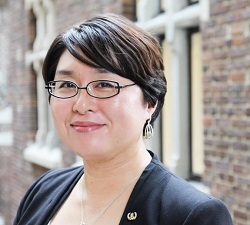
Momoko Kitada is a former seafarer and her research interests lie in gender and diversity issues in shipping, in particular, women seafarers and seafarers’ families in terms of identities and welfare issues. She teaches subjects in Maritime Education and Training (MET), including cultural issues, knowledge management, assessment methodology, and contemporary labour issues. Momoko’s research expands to the human element and social aspects in maritime energy management as well as capacity building for sustainable development. She also teaches research methodology and study skills for MSc students. Momoko is engaged in international collaborations, for example, Associate Researcher at the Seafarers International Research Centre (SIRC) – Cardiff University; Guest Lecturer at Open University, Japan; and Adjunct Professor at the AMET University, India. She can be reached at mk@wmu.se
This essay is a chapter of the book, The World of the Seafarer published by Springer. Copyrighted © Momoko Kitada – Featured image courtesy from www.itfseafarers.org



